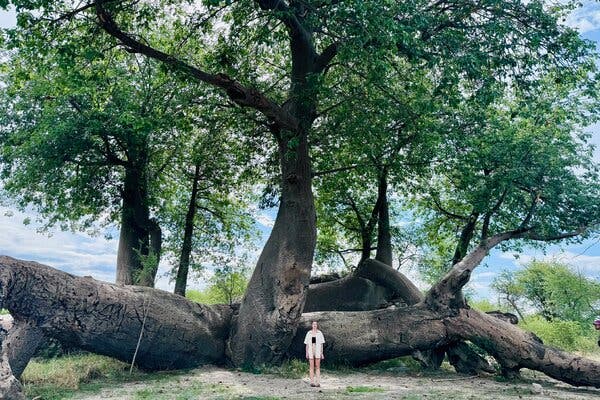Trilobites
A researcher followed up on a study warning that the massive trees were in danger, and found many venerable specimens thriving.

Baobabs are arboreal icons that have punctuated Africa’s landscapes for around 12 million years. With crowns that can grow as large as three tennis courts, they are important for more than their role in ecosystems. The trees are featured in cultural traditions across Africa, and they also support the livelihoods of thousands of people who harvest baobab fruit.
And across mainland Africa, a researcher has argued recently, the trees are flourishing.
This finding offers a contrast with reports several years ago that Adansonia digitata, a baobab species that is widespread, was in serious jeopardy in the face of droughts and rising temperatures linked to climate change, with some of the largest baobabs collapsing in on themselves.
In 2018, researchers took note of the trees’ troubles in the journal Nature Plants.
This alarming news caught the attention of Sarah Venter, a baobab ecologist at the University of the Witwatersrand in South Africa. She had not seen signs in her own field work that the continent’s ancient baobabs were in trouble, so she decided to conduct her own investigation, which was also published, earlier this year, in Nature Plants.
Dr. Venter found that just five of the trees flagged in the 2018 paper had actually died, while the other 10 were healthy or regrowing. An additional 13 exceptionally large baobabs that Dr. Venter had visited in Southern Africa also appeared to be doing well.
In a review of recently published literature, Dr. Venter showed that millions of baobabs populate the continent, including in areas that have endured severe droughts or floods. (Six species of baobabs in Madagascar are imperiled by deforestation.)
These findings suggest that “there’s a very healthy population of baobabs across Africa,” she said.


